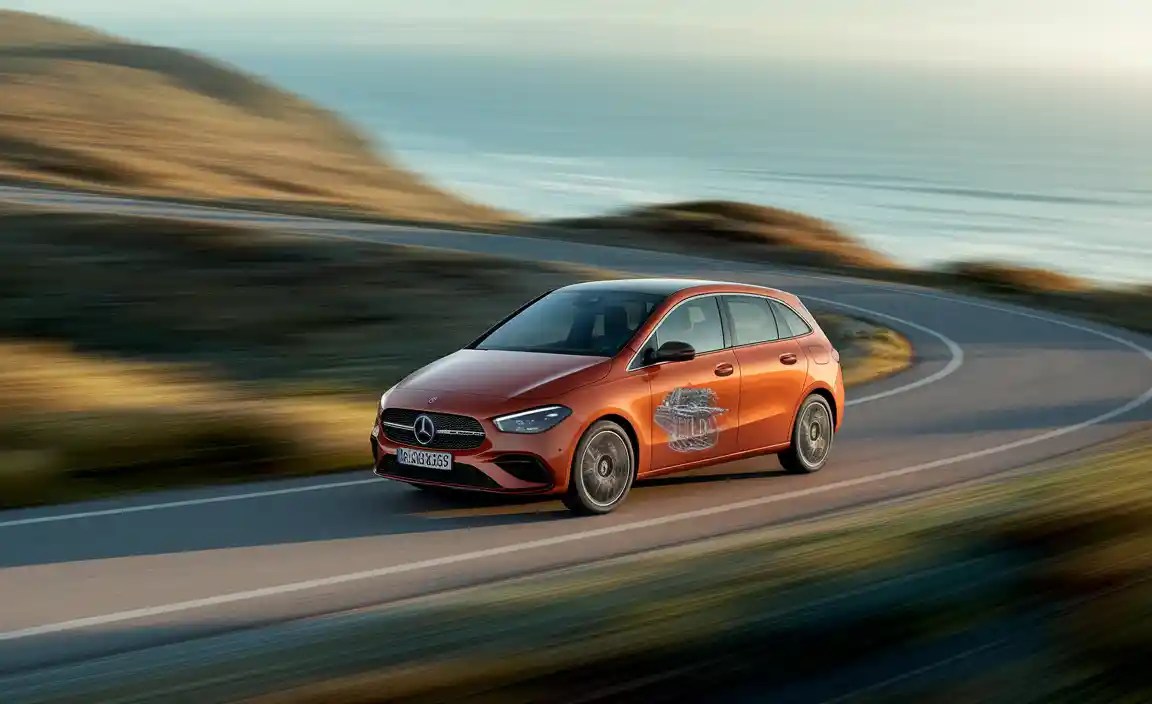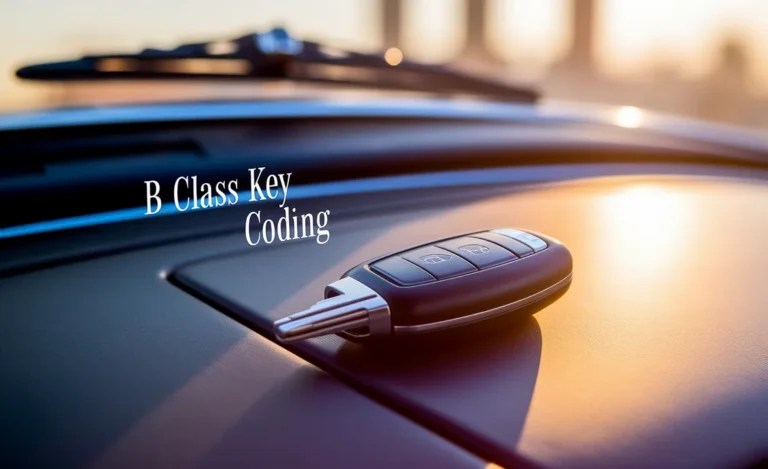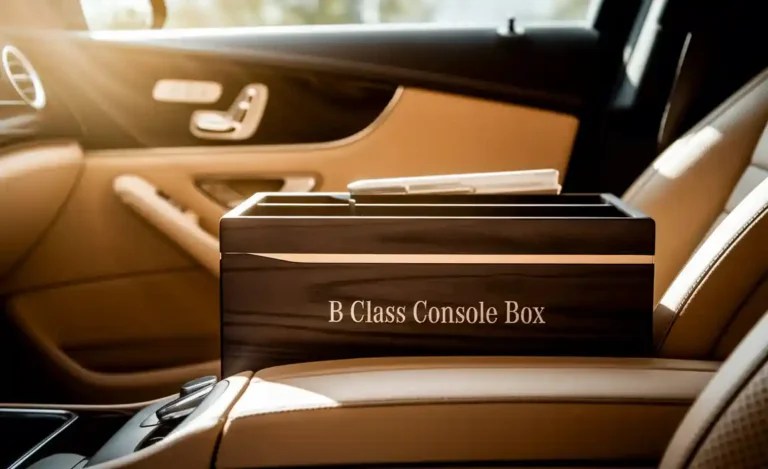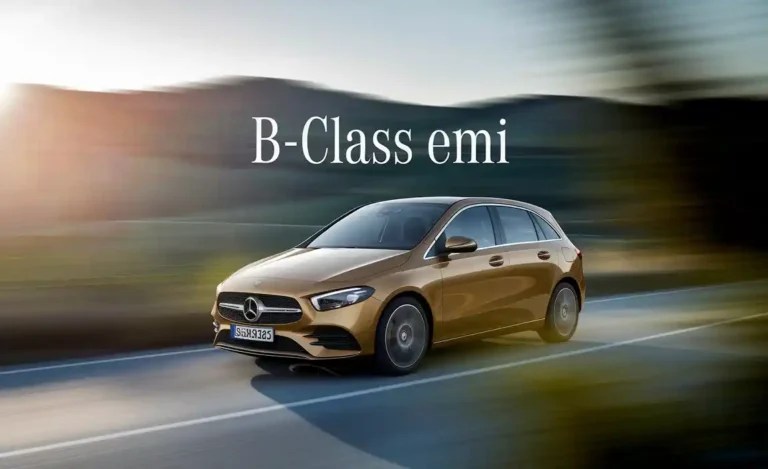B Class Evolution: Effortless Luxury Perfected
The B-Class Evolution signifies Mercedes-Benz’s mastery in blending compact practicality with unmistakable luxury. Discover how this innovative model perfected effortless everyday elegance, offering sophisticated design, advanced technology, and premium comfort in an accessible package for discerning drivers.
Welcome to the world of the Mercedes-Benz B-Class, a vehicle that redefined what a compact multi-purpose vehicle could be. As Bryan Bowman from MercedesBlue, I’m thrilled to guide you through its remarkable journey. Many car buyers often face the dilemma of choosing between a practical, everyday car and a luxury vehicle. Finding a car that offers both can seem like a challenge. The B-Class, however, was designed precisely to bridge this gap, offering the best of both worlds wrapped in the iconic Mercedes-Benz elegance. It’s a testament to ingenious engineering and intuitive design, proving that luxury doesn’t have to be reserved for larger vehicles. We’ll explore how this model achieved its unique blend of comfort, technology, and performance, making it a standout choice for those seeking refined mobility.
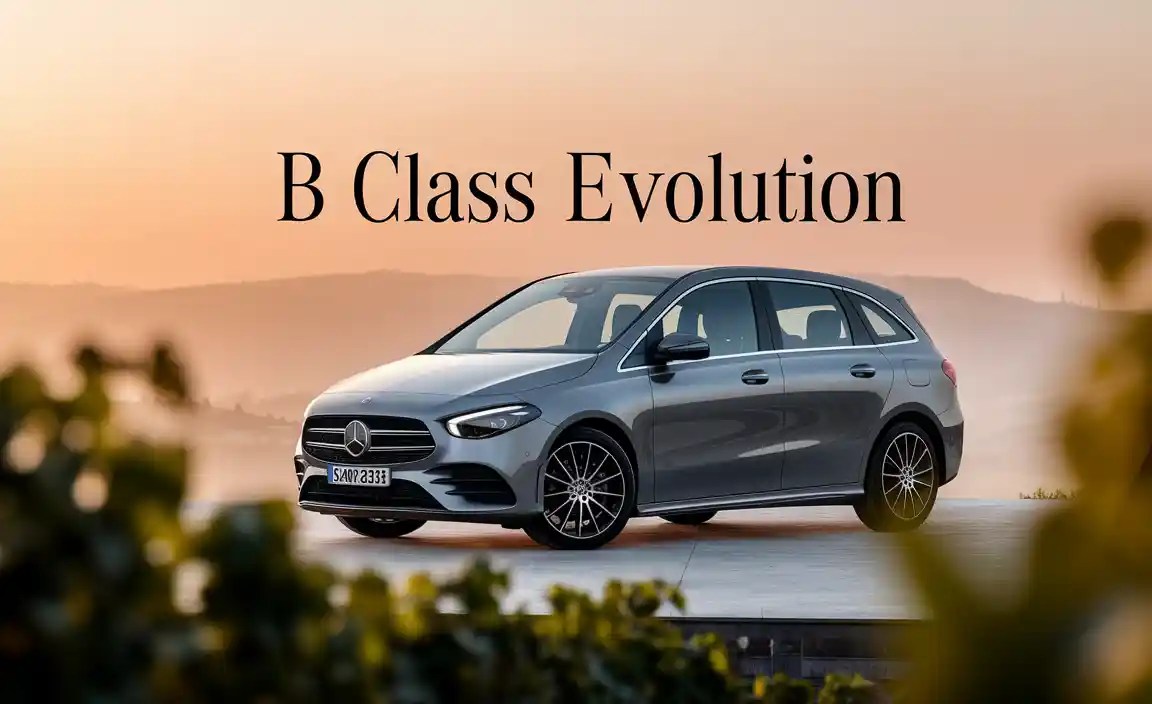
The Genesis of the B-Class: A Vision for Compact Sophistication
Before diving into the “evolution,” it’s important to understand the “why” behind the B-Class. Mercedes-Benz recognized a growing need for a vehicle that combined the practicality and versatility of a compact MPV (Multi-Purpose Vehicle) with the premium feel and advanced technology synonymous with the brand. The goal was to create a car that was exceptionally comfortable, remarkably spacious for its footprint, and infused with the sophisticated styling and driving dynamics that Mercedes-Benz owners expect.
This wasn’t just about making a smaller car; it was about reimagining the compact segment. Mercedes-Benz aimed to deliver an “effortless luxury” experience, meaning that the premium qualities should be seamlessly integrated into the fabric of daily driving. From its inception, the B-Class was envisioned to be more than just transportation; it was meant to be a sanctuary on wheels, a sophisticated companion for life’s journeys.
Understanding the B-Class Concept: More Than Just a Compact Car
At its core, the B-Class is built on a sandwich-floor concept. This ingenious design places the engine and transmission longitudinally beneath the cabin floor. This not only lowers the center of gravity, enhancing driving stability and handling, but also cleverly creates more interior space. It allows for a higher seating position, offering excellent all-around visibility, and a flexible cargo area that belies the car’s compact exterior dimensions.
This approach allowed Mercedes-Benz to pack significant luxury and technology into a smaller, more agile package. The B-Class was designed for active individuals and families who needed versatility without compromising on refinement. It offered a higher level of interior quality, advanced safety features, and contemporary design that differentiated it from its competitors.
Key Evolutionary Milestones of the B-Class
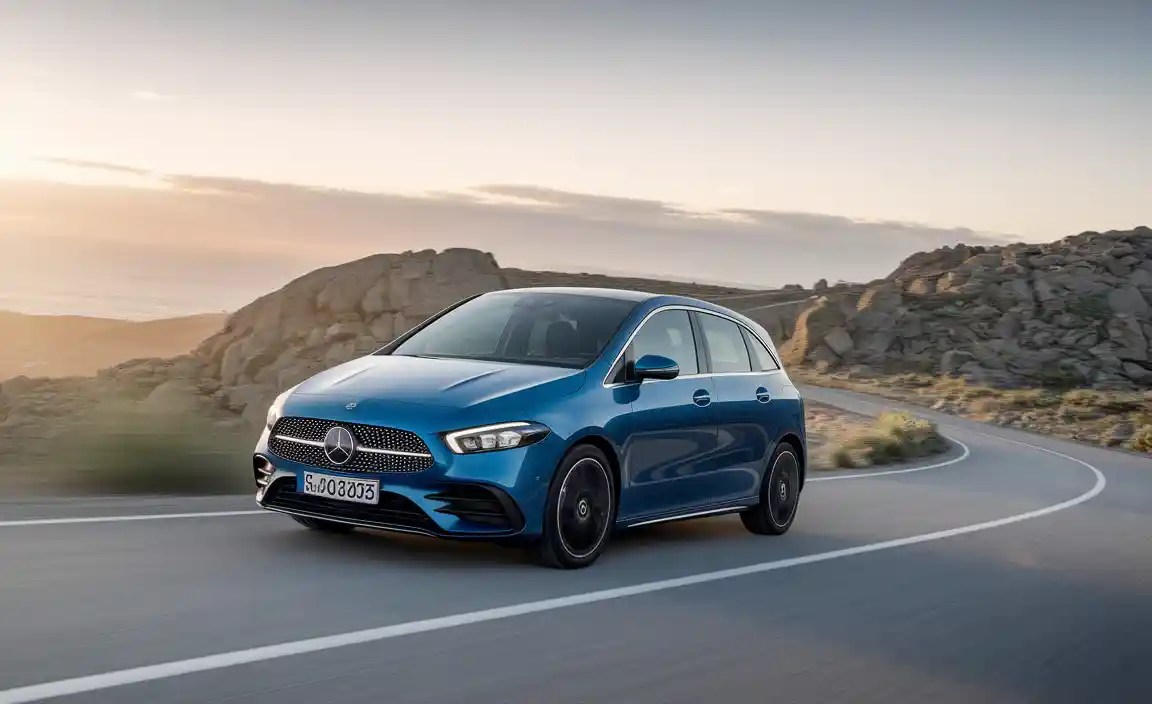
The B-Class has seen several generations, each refining the original concept and introducing new innovations. Let’s look at the key stages of its development:
First Generation (W245: 2005-2011) – The Pioneer
The inaugural B-Class, codenamed W245, made its debut in 2005. It introduced the world to the concept of “compact luxury MPV.”
- Design: A distinctive tall, van-like profile with a focus on interior practicality and height. The design prioritized space and visibility.
- Technology: Featured Mercedes-Benz’s characteristic safety innovations for its class, including advanced airbag systems and optional driver assistance features.
- Powertrain: Primarily offered a range of efficient petrol and diesel engines, focusing on fuel economy and everyday usability.
- Interior: Characterized by a spacious cabin with flexible seating and a boot that could be expanded easily, making it a practical choice for various needs.
Second Generation (W246: 2011-2019) – The Refinement of Style and Tech
The W246 generation, launched in 2011, marked a significant evolution, moving the B-Class towards a more conventional hatchback aesthetic while retaining its core strengths.
- Design: Shedding some of its MPV bulk, the W246 adopted a sleeker, more aerodynamically sculpted silhouette. It looked less like a van and more like a premium hatchback.
- Technology: This generation saw a substantial leap in technology. It introduced COMAND infotainment systems, advanced driver assistance systems (like COLLISION PREVENTION ASSIST and ATTENTION ASSIST), and integrated smartphone connectivity options. Many of these features were previously found only in higher-end Mercedes-Benz models.
- Powertrain: Continued with efficient petrol and diesel engines, but also saw the introduction of more advanced transmission options, including the 7G-DCT dual-clutch automatic. A notable addition was the B-Class Electric Drive (W242), hinting at Mercedes-Benz’s future direction in electrification.
- Interior: The cabin received a major upgrade in terms of perceived quality and modern design. A high-resolution display, ambient lighting, and enhanced materials created a more luxurious and inviting atmosphere. The higher seating position was retained, along with its practical cargo capabilities.
Third Generation (W247: 2019-Present) – The Modern Era of Smart Luxury
The current generation, the W247, launched in 2019, cemented the B-Class’s position as a sophisticated and technologically advanced compact premium hatchback. The “evolution” here is towards a more dynamic design and an even more integrated digital experience.
- Design: The W247 features a much more flowing and athletic design than its predecessors. It’s lower, wider, and more coupe-like, emphasizing sportiness while still offering good interior space.
- Technology: This generation is heavily defined by the MBUX (Mercedes-Benz User Experience) infotainment system. This intuitive system uses artificial intelligence, voice control (“Hey Mercedes”), and a large, customizable dual-screen display to provide a seamless and personalized driving experience. Advanced driver assistance systems are now more sophisticated and comprehensive, mirroring those found in S-Class models.
- Powertrain: A range of efficient petrol and diesel engines are available, many featuring mild-hybrid technology (EQ Boost) for improved responsiveness and efficiency. Electric drive variants also continue to be a strong focus.
- Interior: The interior truly embodies “effortless luxury perfected.” It features a minimalist yet highly customizable dashboard, turbine-style air vents, premium materials, and a focus on ambient lighting that can be adjusted to the driver’s mood. The sense of spaciousness and quality is palpable.
Effortless Luxury: What Does It Mean for the B-Class?
The concept of “effortless luxury perfected” in the B-Class isn’t just a marketing slogan; it’s woven into the vehicle’s DNA. It encompasses several key areas:
1. Intuitive Technology
Mercedes-Benz has a reputation for cutting-edge technology, and the B-Class seamlessly integrates it. The MBUX system in the latest generation is a prime example. It learns your habits, anticipates your needs, and allows for natural voice interaction. Complex functions become simple. For instance, instead of navigating through menus, you can simply say, “Hey Mercedes, I’m feeling cold,” and the climate control will adjust. This makes using advanced features feel natural, not burdensome.
2. Refined Comfort and Ergonomics
Luxury is also about how the car feels and how it treats its occupants. The B-Class excels in this regard:
- Seating: Ergonomically designed seats provide excellent support for long journeys, reducing fatigue. Optional features like seat heating and ventilation further enhance comfort.
- Ride Quality: Despite its compact size, the B-Class offers a ride that is smooth and composed, absorbing road imperfections effectively. This is aided by sophisticated suspension systems and the low center of gravity inherent in its design.
- Noise Insulation: A significant effort is made to minimize road, wind, and engine noise, creating a quiet and serene cabin environment. This allows occupants to converse easily or enjoy their audio system without distraction.
3. Intelligent Space Utilization
Even with its compact exterior, the B-Class feels remarkably spacious. The higher seating position provides a commanding view and easy ingress/egress. The flexible cargo system (with Easy-Vario-Plus in older models, and versatile rear seat configurations in newer ones) allows the boot space to be easily adapted for luggage, shopping, or sporting equipment. This practicality is delivered without making the car feel bulky or cumbersome.
4. Sophisticated Design and Materials
The exterior design of the latest B-Class is sleek and modern, projecting a premium image. Inside, the materials used are of high quality, with soft-touch surfaces, elegant trim options, and excellent fit and finish. The attention to detail, from the stitching on the seats to the design of the air vents, contributes to an overall feeling of understated luxury. The customizable ambient lighting adds a personal touch and elevates the interior ambiance.
Performance and Powertrains: Luxury Meets Efficiency
The B-Class is not typically seen as a performance model in the vein of an AMG. However, its powertrain evolution has focused on providing a responsive, efficient, and refined driving experience that aligns with the “effortless luxury” ethos.
Across generations, Mercedes-Benz has offered a range of inline-four petrol and diesel engines, all tuned for a balance of performance and economy. The introduction of the 7G-DCT dual-clutch automatic transmission brought smoother, quicker shifts and improved fuel efficiency. For the current generation (W247), the integration of mild-hybrid technology (EQ Boost) with some petrol engines provides an electric boost during acceleration, enhancing responsiveness and reducing fuel consumption. This is a subtle yet significant improvement that contributes to the effortless feel.
For a snapshot of the powertrain options across generations, consider this:
| Generation | Typical Powertrain Options (Examples) | Transmission Options | Key Powertrain Innovations |
|---|---|---|---|
| W245 (1st Gen) | B 150/170/180 (Petrol), B 180/200 CDI (Diesel) | 5-speed Manual, 6-speed Manual, Autotronic (CVT) | Focus on fuel efficiency for everyday driving. |
| W246 (2nd Gen) | B 180/200 (Petrol), B 180/200 CDI (Diesel), B 250 (Performance Petrol) | 6-speed Manual, 7G-DCT (Dual-Clutch Automatic) | Introduction of Dual-Clutch Transmission, more performance-oriented options, early electric variant (W242). |
| W247 (3rd Gen) | B 180/200 (Petrol), B 180/200 d (Diesel), B 250 e (PHEV – in some markets) | 8-speed Dual-Clutch Automatic (newer variants) | Mild-hybrid technology (EQ Boost) for petrol engines, advanced emissions control, focus on electric and plug-in hybrid variants. |
While performance figures might not match larger Mercedes-Benz models, the B-Class excels in delivering a driving experience that is smooth, quiet, and responsive enough for confident merging onto highways and agile city driving. The steering is precise, and the braking system is reliable, all contributing to a sense of secure command behind the wheel.
Safety and Driver Assistance: The Mercedes-Benz Promise
Mercedes-Benz has always prioritized safety, and the B-Class is no exception. From its foundational design to the latest advanced systems, it embodies the brand’s commitment to protecting its occupants. The sandwich-floor concept itself contributes to safety by allowing for a high-strength occupant cell and effective crumple zones.
Over the years, the technological advancements in safety have been remarkable. Technologies that were once exclusive to the flagship S-Class have trickled down to models like the B-Class. These systems aim to prevent accidents or mitigate their severity:

- Active Brake Assist: Can warn the driver and automatically apply the brakes if it detects an imminent collision with a vehicle or pedestrian.
- Active Lane Keeping Assist: Helps to keep the vehicle within its lane by providing gentle steering interventions.
- Blind Spot Assist: Warns the driver of vehicles in their blind spot, a crucial feature in busy traffic.
- ATTENTION ASSIST: Detects signs of fatigue in the driver and alerts them to take a break.
- Adaptive Cruise Control (DISTRONIC): Maintains a set distance from the vehicle ahead, reducing driver workload on highways.
These systems, powered by advanced sensors and cameras, work together to provide a comprehensive safety net, enhancing the feeling of security and making driving less stressful. You can learn more about the principles of automotive safety technology from organizations like the National Highway Traffic Safety Administration (NHTSA).
The B-Class vs. Competitors: Standing Out in a Crowded Market
The compact premium segment is highly competitive, with rivals offering their own interpretations of practicality and luxury. However, the B-Class has consistently differentiated itself through its unique combination of attributes:
- True Mercedes-Benz Feel: While competitors might offer similar features, the B-Class delivers the inherent quality, refinement, and brand prestige that only a Mercedes-Benz can.
- Superior Interior Space and Flexibility: The clever design, stemming from its sandwich-floor origin, often provides more usable interior space and cargo versatility than its rivals, especially for its exterior dimensions.
- Advanced Technology Integration: The adoption of systems like MBUX places the B-Class at the forefront of in-car technology, offering a user experience that is often more intuitive and sophisticated than found elsewhere.
- Higher Seating Position: For many, the slightly higher seating position offers a better view of the road and an easier entry/exit experience, which is a significant practical advantage.
While a hatchback like the Audi A3 or BMW 1 Series might compete on brand prestige and driving dynamics, the B-Class often offers a more practical, spacious, and technologically advanced package for those prioritizing everyday usability and comfort without sacrificing luxury.
Maintaining Your Effortlessly Luxurious B-Class
Owning any Mercedes-Benz is a rewarding experience, and maintaining your B-Class ensures it continues to deliver that effortless luxury for years to come. Adhering to the recommended service schedule is paramount.

- Regular Servicing: Following Mercedes-Benz’s prescribed service intervals for oil changes, filter replacements, and fluid checks is crucial. This prevents wear and tear on vital components.
- Brake System Care: Regular inspections of brake pads and discs ensure optimal stopping power and safety.
- Tire Health: Proper tire inflation and regular rotation help maintain fuel efficiency, handling, and tire longevity.
- Software Updates: For modern B-Class models, ensuring the MBUX and other vehicle software are up-to-date can bring performance improvements and new features.
While many maintenance tasks can be handled by reputable independent mechanics familiar with Mercedes-Benz vehicles, some complex diagnostics and specialized repairs are best left to official Mercedes-Benz service centers. They have access to specific tools, diagnostic equipment, and genuine Mercedes-Benz parts. You can find more detailed maintenance information in your owner’s manual or through the official Mercedes-Benz website.
Frequently Asked Questions about the B-Class Evolution
Q1: What is the primary advantage of the B-Class’s “sandwich floor” design?
A1: The sandwich floor concept allows the engine and transmission to be placed longitudinally under the cabin floor. This lowers the vehicle’s center of gravity, improving handling and stability, while also creating more interior space and allowing for a higher seating position.
Q2: How has the B-Class’s design evolved over generations?
A2: The first generation W245 had a more van-like appearance focused on maximum interior space. The second generation W246 adopted a sleeker, more hatchback-like profile. The current W247 generation has evolved further into a sportier, more dynamic-looking premium hatchback.
Q3: Is the B-Class considered fun to drive?
A3: While not a sports car, the B-Class offers a refined and engaging driving experience. Its lower center of gravity contributes to good handling, and the powertrains are designed for responsive, efficient performance suitable for everyday driving and spirited moments between towns.
Q4: What kind of technology can I expect in a modern B-Class?
A4: Modern B-Class models, particularly the W247, feature the MBUX infotainment system with advanced voice control, large touchscreens, and comprehensive driver assistance systems like Active Brake Assist and Adaptive Cruise Control.

